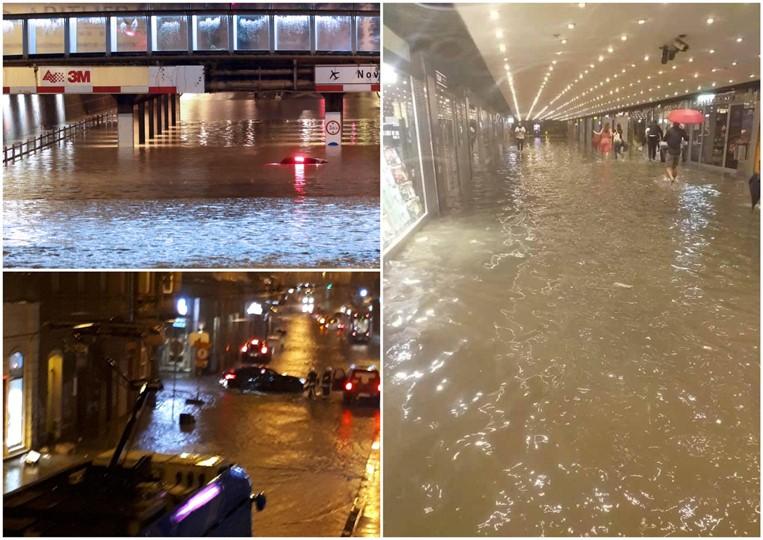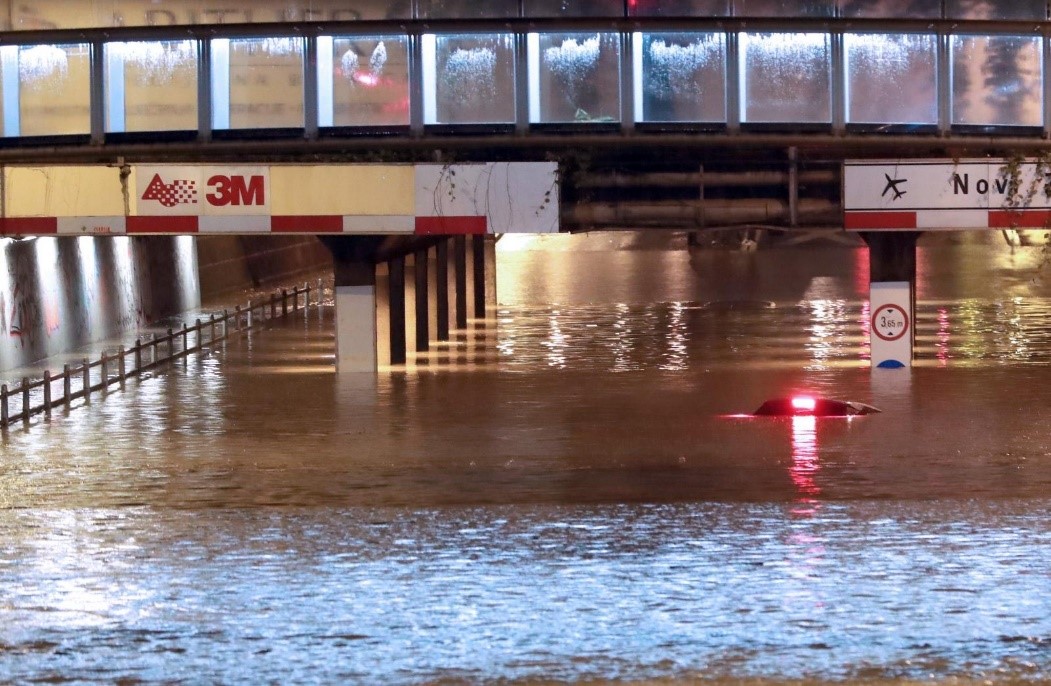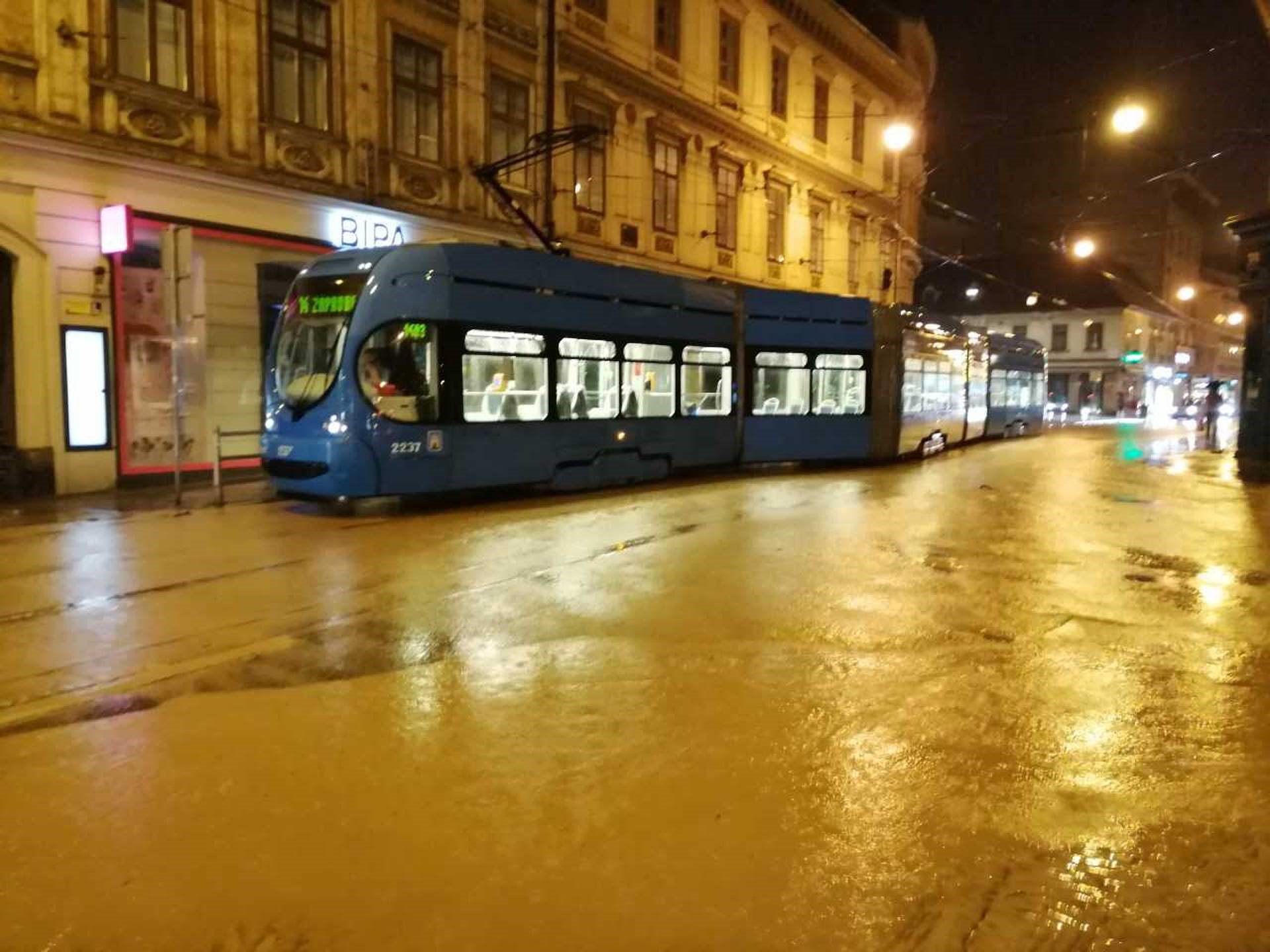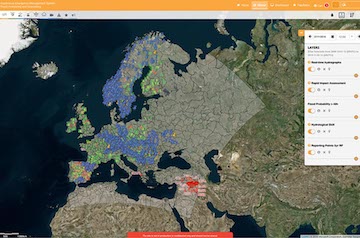
by Dr. Tatjana Vujnovic, Head of the Hydrological Forecasting Division, Croatian Meteorological and Hydrological Service (DHMZ). Cover photo by vecernji.hr
Zagreb is the capital city of Croatia, with estimated population of 804,507 (Data from mid-2018; Croatian Bureau of Statistics, 2019). It is located in the northwest, along the Sava river, at the southern slopes of Medvednica mountain. Average precipitation for July at Zagreb-Gric meteorological station (in the city center) is 81.7mm (based on 1981-2010 climatology).

Numerical weather models successfully forecasted heavy rainfall, which occurred on the late evening of 24 July 2020. The Croatian Meteorological and Hydrological service (DHMZ) issued red warnings for precipitation and thunderstorms (including flash flood warnings) in Meteoalarm for central and northwestern parts of the country. Hydrological forecasters of DHMZ also issued urban flood warnings for the Zagreb city area, since the signals from the two hydrological flash flood forecasting systems operationally used in DHMZ (EFAS ERIC and Southeast Europe Flash Flood Guidance System) were consistent and showed a significant possibility of severe flash flooding as shown in the figure below.

The EFAS ERIC flash flood forecast from 23 July at 00 UTC indicated significant risk of severe flash flooding for Zagreb and surrounding areas. The graph shows the ERIC flash flood forecast time series in Zagreb where peak flows were expected during the night between the 24th to the 25th July 2020. The map shows red and purple triangles indicating the reporting points from the ERIC flash flood forecast, the red and purple shading shows the river channels which could be affected, the blue triangles are where EFAS flash flood notifications were issued.
On the late evening of 24 July 2020, Zagreb-Gric meteorological station recorded 80.1 mm of rain within a 3-hour period, causing urban flash flooding all over the city. The flooding was most severe in the city centre, where people are still struggling with the effects of the earthquake that occurred on 22 March 2020. Numerous streets became impassable, public transport was disrupted, multiple structures and basements were flooded, and fire departments responded to over 350 interventions during the night of the 24/25 July 2020. Tragically, one firefighter passed away during an intervention.

In addition to the huge amount of water accumulated from the storm over a short period of time, one of causes of the urban flooding was a poor evacuation of water within the urban drainage network. The sewerage system in Zagreb was established in 1892. It is a mixed type system which collects sewage from households, excess rainwater, and from streams that come from Medvednica mountain. The system will have to be renewed as the city of Zagreb expands and becomes more urbanized. In its current state, the values used for the sewerage system’s dimensions are outdated and not fit for purpose. In addition, the system needs to be adapted to mitigate the effects of climate change as more frequent extreme precipitation events become increasingly likely.
Further information on the urban flood event has been published by DHMZ. Click the links to read about the meteorological and hydrological analyses of this event. (Croatian only).
Social Media
https://twitter.com/N1infoZG/status/1286769235503480833
https://twitter.com/hrtvijesti/status/1286947118687690752

